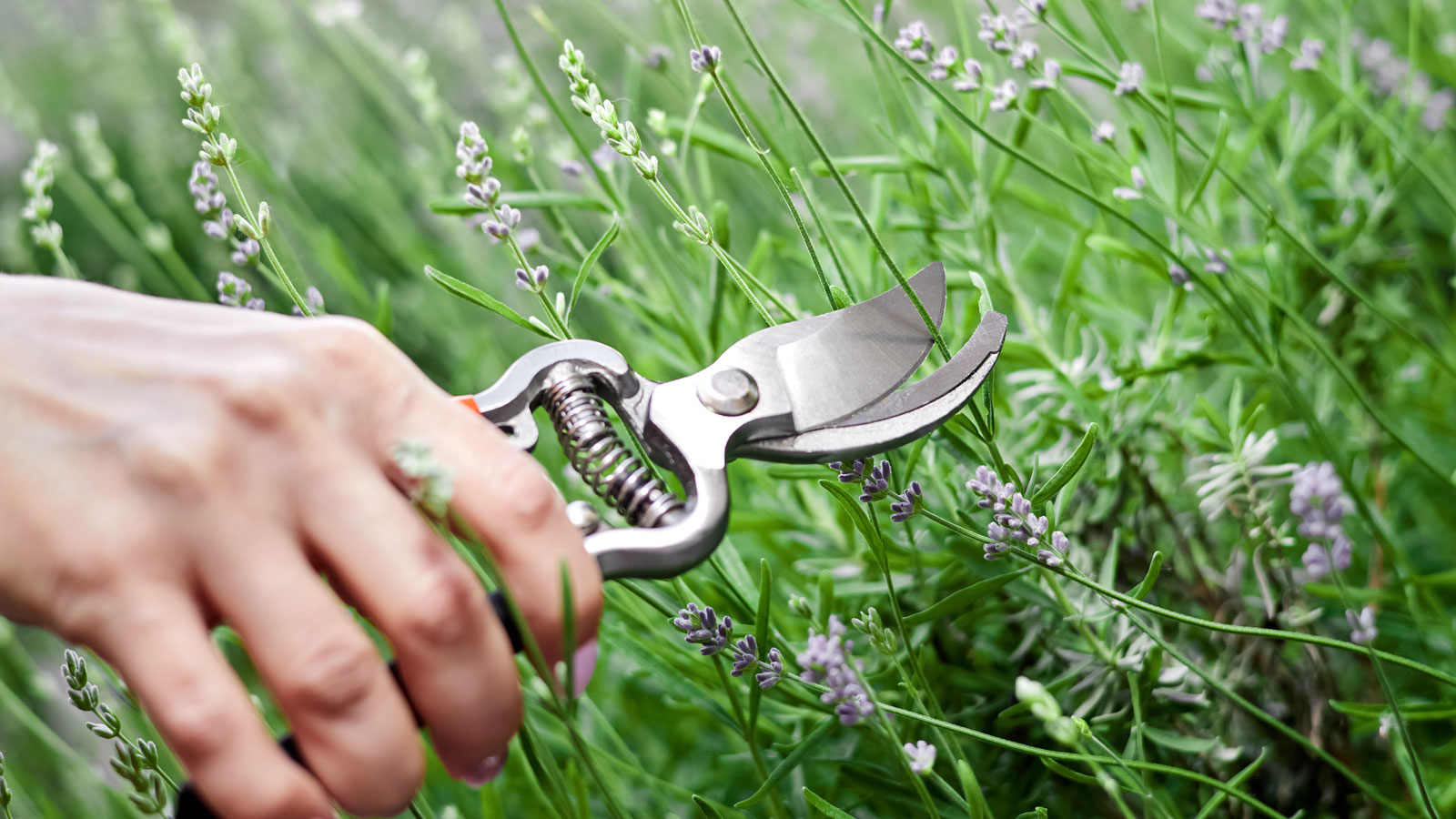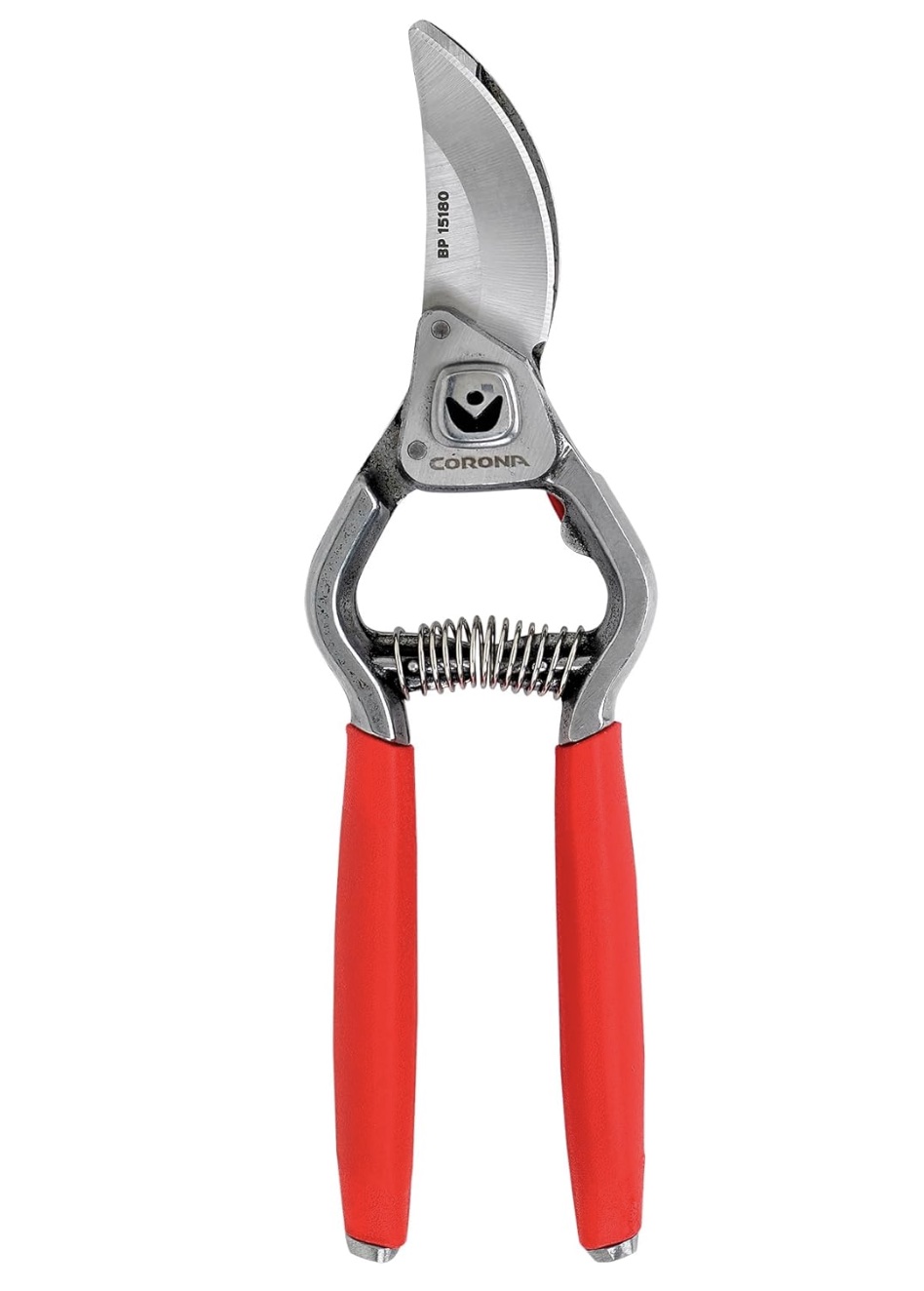What Is The 8-8-8 Lavender Rule? Find Out Why This One Simple Pruning Tip Can Help Rejuvenate Your Lavender
One of the most satisfying summer pruning jobs involves getting your lavender in shape – so if you care about doing it right this summer, the 8-8-8 lavender rule is well worth a try

Amy Draiss

There are some gardening traditions that hold true even though they might seem a bit odd – such as planting aphid-loving plants like nasturtiums next to crops you want to protect, even though you know they will attract the very bugs you don’t want. Or using a pinch of cinnamon as an anti-fungal agent in the garden (and yes, this one has worked for me!). Then there are a few hacks I keep doing out of habit (like singing to plants, for instance – but maybe that’s a story for another time).
Still, there are certain rules that stick in your head and acquire a certain status, even though you’re not entirely sure where you first heard them. The 8-8-8 lavender rule is one such piece of advice I was told many years ago. And around this time every year, a little internal alarm goes off and I duly inspect my lavender bushes to assess my next steps. But what is the 8-8-8 rule, you may well be asking – and how can it help you maintain healthier, happier lavender shrubs and specimen plants? Here’s what I’ve learned about this lavender pruning tip, how it works for me, how you can use it, and how it can be adapted to suit your needs…
What is the 8-8-8 Lavender Rule?
At its heart, the 8-8-8 rule – or the rule of three-eighths – is a pruning maxim. Quite simply, it is a moment in the pruning calendar to pull out our snippers or shears, with a view to helping prepare our lavender plant for the slower months ahead. Over early summer, many of us will hopefully have been deadheading lavender plants to extend the flowering season. But the approach to the eighth day of the eighth month (8th August) is a chance to think about reducing our lavender plants by at least 8 inches (depending on the size and overall condition of the plant).

I’ve heard a couple of variations on this pruning rule, as it goes. One variation, which seems fairly hardcore, is to reduce your lavender plant so it is 8 inches (20cm) tall and 8 inches wide (again, allowing for size of plant). However, the variation I follow for lavender I am growing in the garden involves reducing the size of the plant by approximately eight inches all the way around.
This involves creating a more rounded, compact shape and removing tatty, leggy stems, dead branches and remaining flower stalks. The intention is to give lavender, whether potted or in garden beds or borders, the very best chance to slow down healthily on the approach to dormancy.
Why Does the 8-8-8 Rule Matter?
The lavender 8-8-8 rule provides a useful assist in determining a tidy-up operation – based on the idea that certain lavender flowers are starting to die back as August begins. It pinpoints a moment (after flowering, but before the fall) when it is good to prune lavender to allow it chance to rejuvenate and develop new growth before slowing down for the dormant period. Ideally, it’s a good idea to give lavender plants at least a month to recover from that ‘end of season’ pruning before the colder months kick in.
So the 8-8-8 rule for lavender matters as a barometer for formally marking the end of the flowering cycle, and welcoming in a quieter phase for growth generally, before the plants come to rest entirely. Making these important cuts now promotes a burst of new green growth which can establish before the plant starts to rest. It then wakes up next spring with the necessary foliage required to fire up the engines for the new flowering season. So this timely August prune is vital to helping the lavender ‘stock up’ on fresh supplies ahead of winter, basically.

That said, I take the 8-8-8 rule as a guideline and a prompt, rather than a set of rigid principles. For example, I was told that it can only be used with English lavender. This is based around flowering habit and flowering time (English tending to flower later than certain other types), but there will be variations depending on cultivar, weather, soil, and regional fluctuations.
I would take some cues from the plant in question – such as, is it still flowering, or has it stopped? Does the plant generally look a bit straggly? Are there any purely woody lavender bits that haven’t performed that well over summer? This can all help make a decision about how to apply the 8-8-8 rule on a case-by-case basis.
Sign up for the Gardening Know How newsletter today and receive a free copy of our e-book "How to Grow Delicious Tomatoes".
How Rigid is the 8-8-8 Rule?
The way you apply the 8-8-8 rule for lavender plants will hinge on a few specifics, but the exact nature of both timing and amount still requires a measure of instinct and adjustment. For me, the big determining factor is whether or not your lavender is indeed reaching the end of its particular flowering season. Some shrubs will seem to bloom all summer long. If your lavender plant is still looking flush and vibrant, I wouldn’t just start snipping out of some mechanical desire to follow the crowd. As with many tips, it’s one you can adapt for your own situation. It is, I believe, a valid checkpoint, though – a chance to inspect and assess, and formulate next steps.
The ‘hard pruning’ style does favor English lavender varieties, which can bounce back impressively from extensive late summer snips. Within that broad category, there is plenty of variety in terms of plant shape and size. Plant age and growing conditions (and location) should also be factored in. So in terms of rigidity, I would keep another saying in mind as you decide on the date and extent of your hard prune: check twice, cut once.
Look at the color of the flowers – if they seem gray, that’s the big clue. Pollinators will also tell you when the lavender’s flowers are on the way out – by refusing to flit around in the same way. Appraise the overall shape and spread of the plant – is it becoming unwieldy or ungainly? Look out for legginess, and also gaps in the plant. Where there are opportunities to reduce weariness but also give the shape a lift, don’t be afraid to use this rule to prompt a phase of targeted rejuvenation.

How to Prune with the 8-8-8 Rule
If you’re satisfied that your lavender has stopped flowering, is mostly covered in faded blooms, looks leggy and seems to have collapsed into itself, your summer cutting is sure to be beneficial. Make sure your shears, secateurs and pruners are sharp. I would also say it’s well worth using a measuring stick or measuring tape to check both the height and width of the plant. Again, some gardeners go in really hard with this haircut, and apply the 8-8-8 rule as leaving 8 inches rather than removing 8 inches. I would be looking to remove 8 inches (or thereabouts) but only if I was still confident that at least half the plant remained.
Where making cuts, don’t slice indiscriminately into the wood zone. Look closely and check along the branches. You don’t want to cut into the woody part – unless it looks fairly lifeless, hasn’t produced any green or bloom during the summer, and isn’t adding anything to the overall shape. The ideal is to cut just above the area where the foliage begins. Along the length of woody stems, where you see blue-green nobs of color, cut just north of those. The result will hopefully be a smattering of foliage color, with significant reduction in plant scale and shape. You can use this opportunity to take lavender cuttings and start off your next generation in pots.
I find it helps to use shears for bulk cuts and pruners for targeted, precise cuts. Cut just above a node (where the foliage meets the stem) to give the best chance at healthy regeneration. Take your time, and treat this rule as a great chance to set the tone for next year’s growth. You won’t need to feed your lavender after pruning – just the usual watering, and you’re done. When you aren’t able to get to this rule in time, and you miss out on a late summer cut, it’s best to wait until spring for a lighter prune – and resolve to go in hard at the end of next summer’s flowering phase.

Lavender Pruning Essentials

Make light work of repeated cuts and continuous cutting with these garden shears – perfect for batch snipping of lavender stems. Combine with a precision snipper or pruner for shaping.

Resilient and long-lasting, yet comfy and snug, these gardening gloves are thorn-proof and puncture resistant for peace of mind when pruning back your lavender. Oh, and they look great.

Say goodbye to floppy tape measures! This lovely Stanley model has a thicker tape width than the average model, making it far sturdier and therefore a lot more reliable when you're checking the width and height of your lavender.

Janey is a former assistant editor of the UK’s oldest gardening magazine, Amateur Gardening, where she worked for five years. For the last few years, she has also been writing and editing content for digital gardening brands GardeningEtc and Homes & Gardens. She’s taken part in a range of conservation and rewilding projects for the Royal Horticultural Society (RHS) and the British Trust for Conservation Volunteers (BTCV) as a way of exploring her horticultural horizons. She is currently undertaking her RHS Level 2 certificate in The Principles of Plant Growth and Development.
- Amy DraissDigital Community Manager
